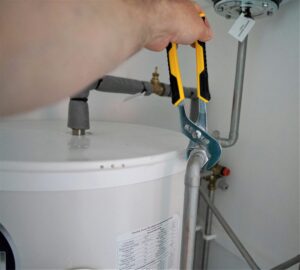Preventing Water Damage in Your Home
 Water damage is a common issue that homeowners may face at some point. It not only leads to inconvenience and disruption but can also result in costly insurance claims. Being aware of the signs and taking preventive measures can help you avoid these expenses.
Water damage is a common issue that homeowners may face at some point. It not only leads to inconvenience and disruption but can also result in costly insurance claims. Being aware of the signs and taking preventive measures can help you avoid these expenses.
Here are some areas to check and precautions to take:
Water Valves:
Inspect the valves that connect your faucets, toilets, and washing machines for any leaks or signs of previous leaks. Look for efflorescence, which appears as a white, green, or yellow buildup on pipes or fittings. This mineral residue is deposited when water dries.
If you suspect a valve is failing or the connection is corroded, consider replacing it. A plumber can assist you with this task, or you can do it yourself if it’s a screw-on valve, not soldered to the pipe. The cost of replacing a valve is generally under $5.00.
Drain Failure:
Periodically check your crawl space for exposed drain pipes, as well as other ducting and water pipes. Drain pipes are usually large black pipes without insulation. Inspect the vapor barrier in your crawl space for stains, which may indicate leaks from drain pipes. Resealing the drain can often resolve the issue and prevent further damage.
Broken Pipes:
Broken pipes are often caused by exposure to freezing temperatures. Pipes inside walls can freeze if a home’s heating system fails during cold weather, if the house is vacant, or if the home is not insulated enough.
To protect your home from frozen pipes, ensure that the heat is on and insulate exposed water pipes. If you plan to leave your home vacant for an extended period, it’s advisable to turn off the water supply to prevent potential flooding in case of a burst pipe.
Washing Machine Hoses:
Regularly inspect the hoses connected to your washing machine for bulges, cracks, or signs of wear. These hoses endure significant water pressure and can fail over time. Consider replacing them with braided stainless steel water supply hoses, which have a longer lifespan and can help prevent costly water damage claims. Similarly, check the hose of your dishwasher, as it is susceptible to similar issues. Most dishwashers can be easily removed with two screws for hose replacement.
By following these safety tips and conducting regular inspections, you can significantly reduce the risk of water damage in your home. Avoiding water-related incidents not only saves you from financial loss but also spares you the inconvenience of being displaced from your home during repairs. Remember, prevention is key in maintaining a safe and secure living environment.


